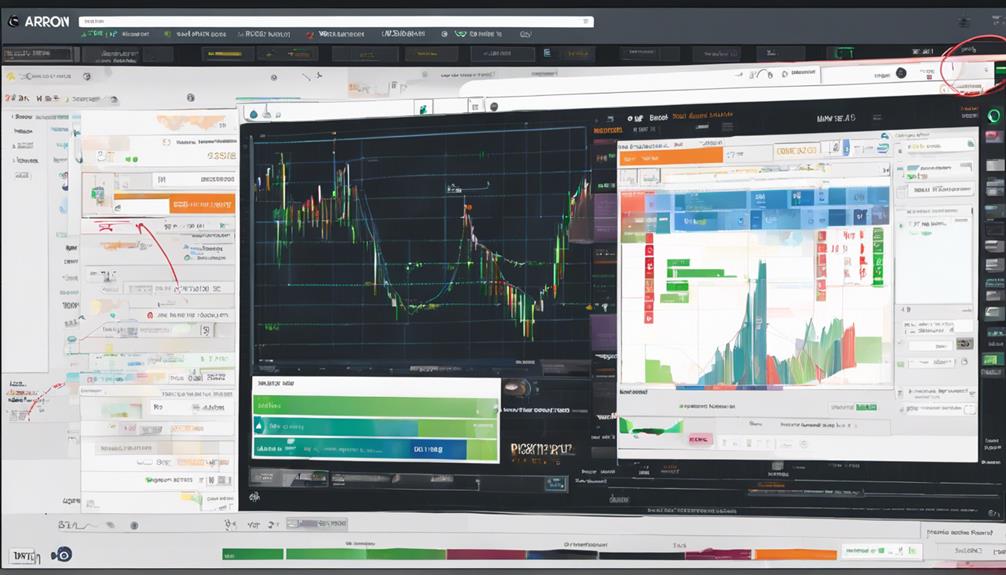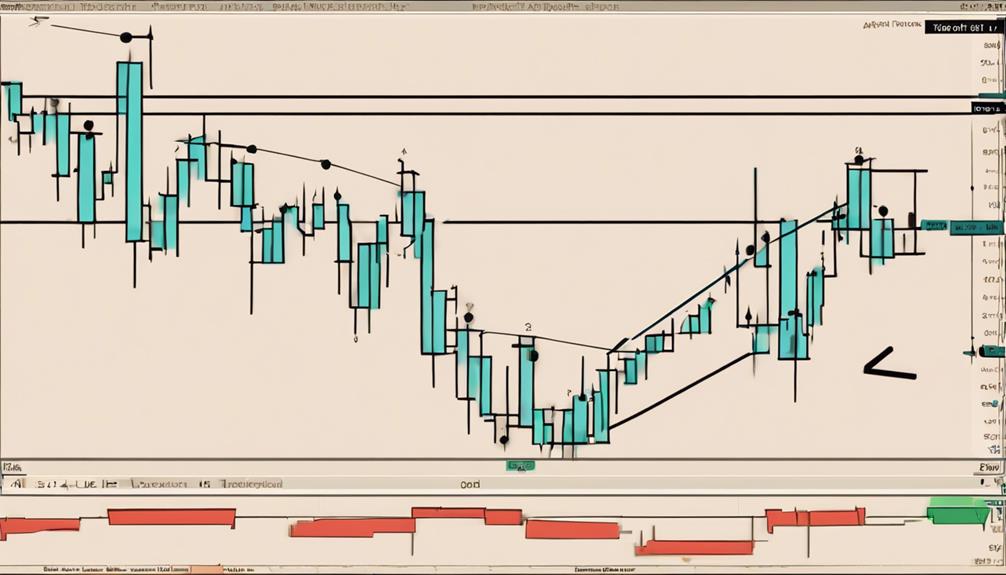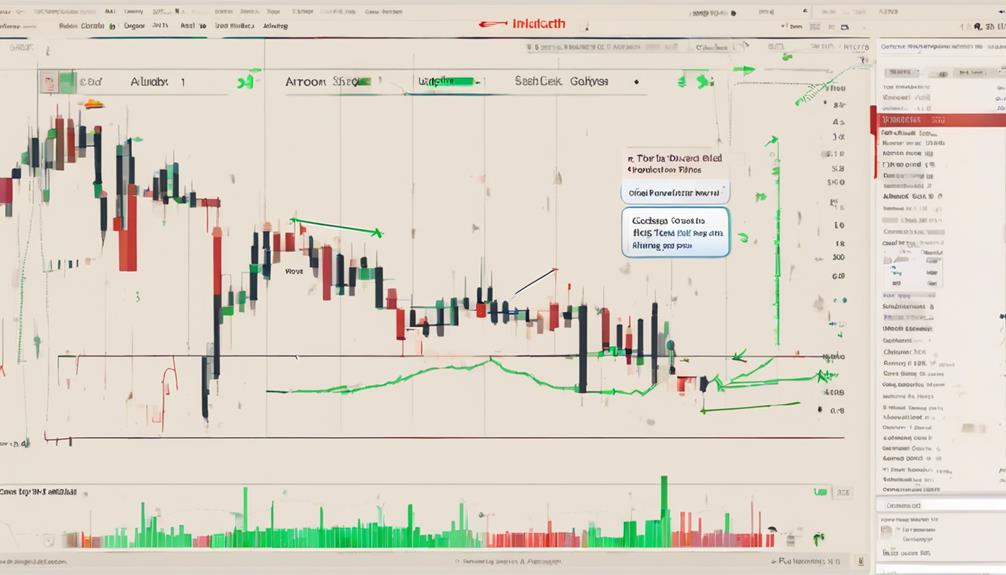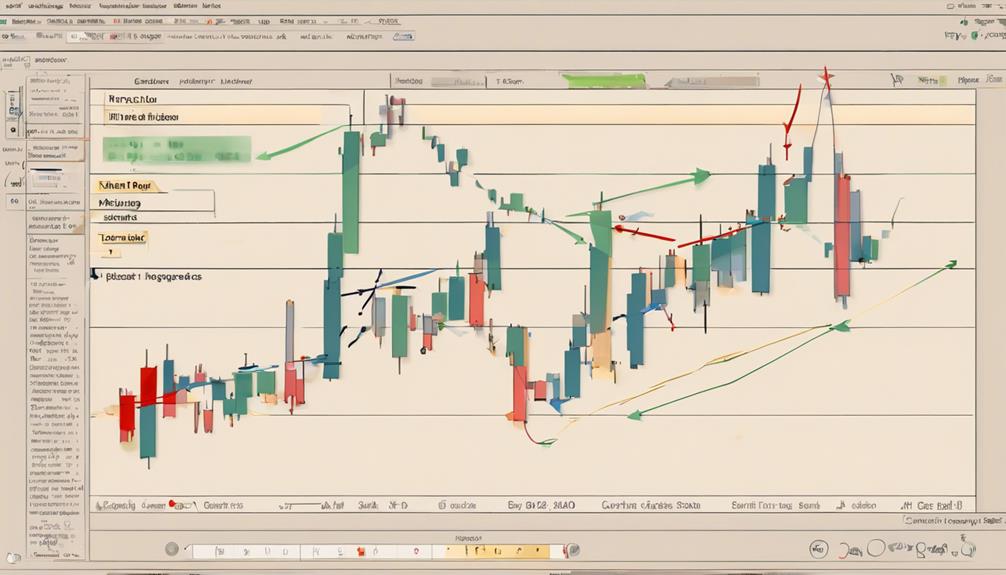When navigating the complex landscape of trading, imagine having a compass that not only points out potential paths but also illuminates the way ahead.
The Aroon indicator serves as just that, guiding you through market trends and signaling crucial turning points.
As you embrace the significance of this tool, explore its intricate steps that can unlock a deeper understanding of market dynamics and empower your trading decisions.
Importance of Aroon Indicator
The significance of the Aroon Indicator lies in its ability to provide traders with a clear understanding of market trends and potential reversals. By analyzing the time since highs and lows, this indicator helps in determining the strength of trends, making it a valuable tool for traders.
Understanding these trends is essential for making informed trading decisions. Additionally, the Aroon Indicator assists in timing entries and exits effectively, enhancing the precision of trading strategies.
When used in conjunction with other technical analysis tools, the Aroon Indicator contributes to a comprehensive analysis of market trends. Therefore, incorporating the Aroon Indicator into your trading approach can significantly improve your ability to interpret market movements and optimize your trading decisions.
Setting Up Aroon Indicator

To configure the Aroon Indicator effectively, start by selecting the appropriate period length and interpreting the Aroon values for accurate trend strength assessment.
The Aroon Indicator comprises two lines, Aroon Up and Aroon Down, which measure uptrend and downtrend strength. Typically, the indicator is calculated over a set period, commonly 25 periods. Aroon values range from 0 to 100, where values nearing 100 signify robust trends, while those close to 0 indicate weaker trends.
Traders leverage Aroon crossovers and the relationship between Aroon Up and Aroon Down to pinpoint potential entry and exit points in the market. Properly setting up the Aroon Indicator ensures enhanced trend accuracy and aids in making informed trading decisions.
Interpreting Aroon Signals

When interpreting Aroon signals, focus on the crossovers between Aroon Up and Aroon Down for actionable insights into market trends. Aroon Up crossing above Aroon Down signifies a strengthening bullish trend, while Aroon Up at 100 and Aroon Down at 0 indicate a robust uptrend with no downtrend in sight.
Conversely, Aroon Down crossing above Aroon Up suggests a bearish trend gaining momentum. Aroon values hovering around 50 reflect periods of market consolidation or indecision. Utilize Aroon crossovers to time trades effectively and pinpoint potential trend reversals.
Using Aroon Indicator for Entry

Pivoting from interpreting Aroon signals, understanding how to use the Aroon Indicator for entry empowers traders to pinpoint optimal times to enter the market based on trend dynamics and strength.
Utilizing Aroon crossovers and trend confirmations, traders can enhance their trading strategies and capitalize on emerging trends effectively. When Aroon Up crosses above Aroon Down during a strong trend, it may indicate a bullish trend, presenting a potential entry point.
Implementing Aroon in Risk Management

Implementing the Aroon Indicator in risk management enhances traders' ability to identify potential trend reversals and adjust positions accordingly. By setting up alerts for crossovers and extreme readings, traders can proactively manage risks.
Aroon also aids in determining appropriate stop-loss levels based on the strength of the trend, ensuring better risk control. Utilizing the Aroon Indicator in risk management empowers traders to make informed decisions by providing timely trend signals.
This proactive approach enables traders to react swiftly to changing market dynamics, thereby optimizing their risk management strategies. Incorporating the Aroon Indicator into risk management practices can significantly improve overall decision-making processes and enhance the effectiveness of risk mitigation efforts.
What Are the Steps to Use the Aroon Indicator for Trend Direction?
To use the Aroon indicator for trend direction, first, plot the Aroon up and down lines on a chart. Next, pay attention to the crossovers between the two lines to identify trend changes. Finally, use the Aroon indicator trend direction to confirm the strength of the current trend.
Frequently Asked Questions
What Is the Use of Aroon Indicator?
The Aroon Indicator aids in identifying trend strength and potential reversals based on recent price data. It focuses on recent highs and lows to pinpoint entry and exit points effectively, crucial for informed trading decisions.
Why Is It Important to Use Indicators Correctly?
Using indicators correctly is vital for accurate trend identification and risk management in trading. Misinterpreting indicators can lead to poor decisions. Understanding nuances maximizes their effectiveness. Proper usage enhances performance and minimizes errors.
What Is the Best Strategy for Aroon?
To maximize Aroon's potential, combine Aroon Up and Down values. Look for Up above 70, Down near zero for strong bull trends. Utilize crossovers for entries. Parallel lines suggest consolidation. Aroon at 100 signals robust trends.
What Is the Difference Between RSI and Aroon Indicator?
In trading, RSI gauges momentum, while the Aroon Indicator measures trend strength by tracking highs and lows over time. RSI pinpoints overbought/sold zones; Aroon predicts trend shifts. RSI reacts swiftly to short-term changes, Aroon captures longer trends effectively.
Conclusion
In conclusion, utilizing the Aroon indicator is essential for traders seeking to identify trends, ranging markets, and potential reversals.
By following the steps outlined in this article, you can enhance your trading strategies, improve timing for entries and exits, and effectively manage risks.
While some may argue that relying solely on indicators can be limiting, incorporating the Aroon indicator as part of a comprehensive trading plan can significantly increase your chances of success in the market.
